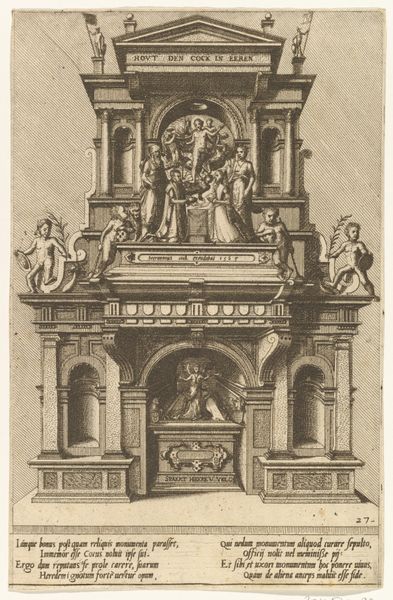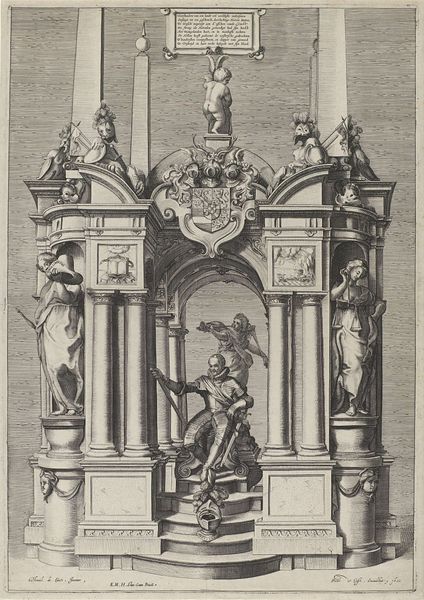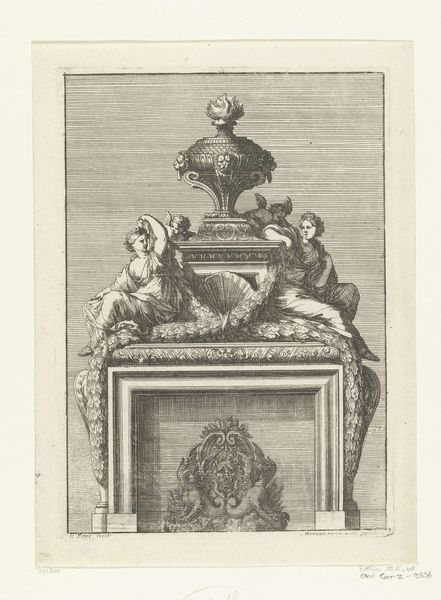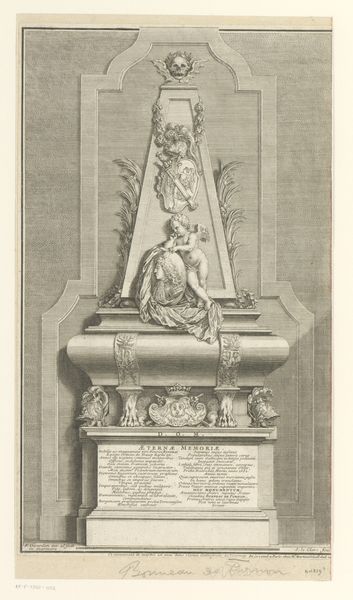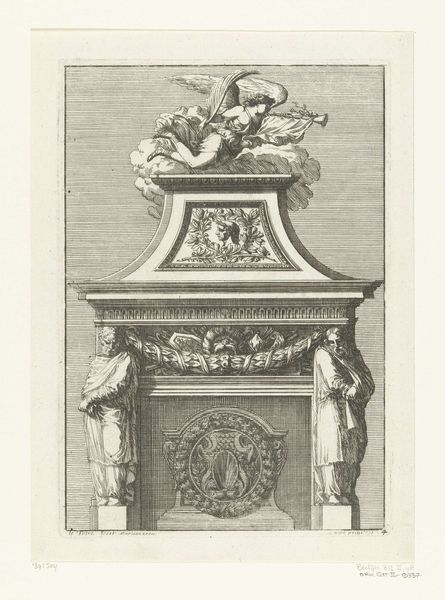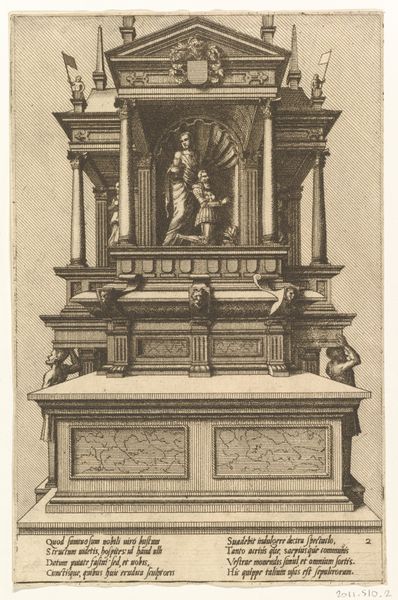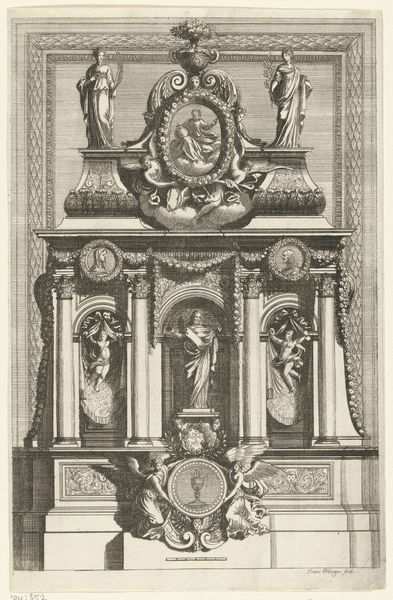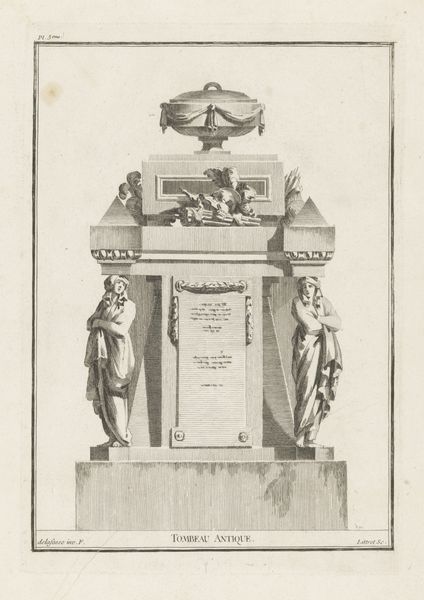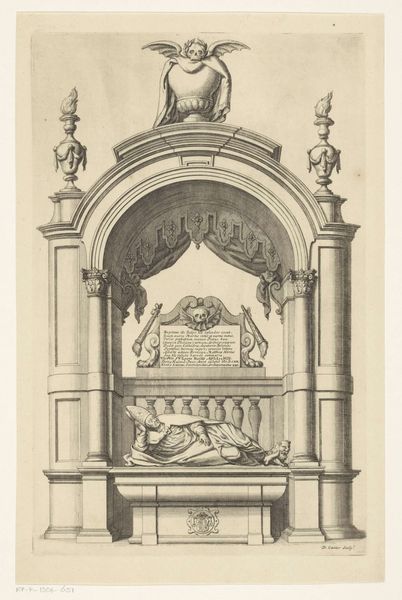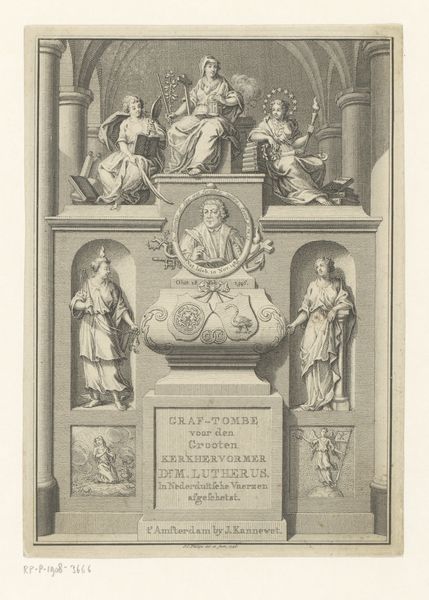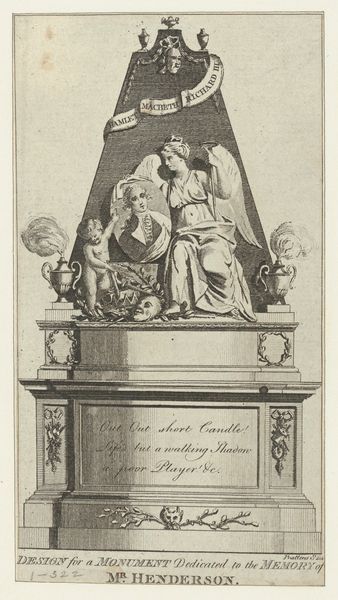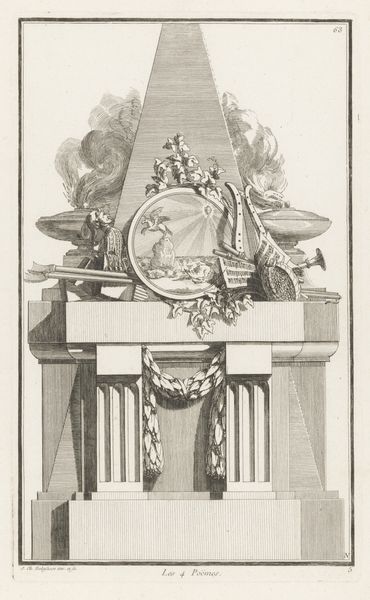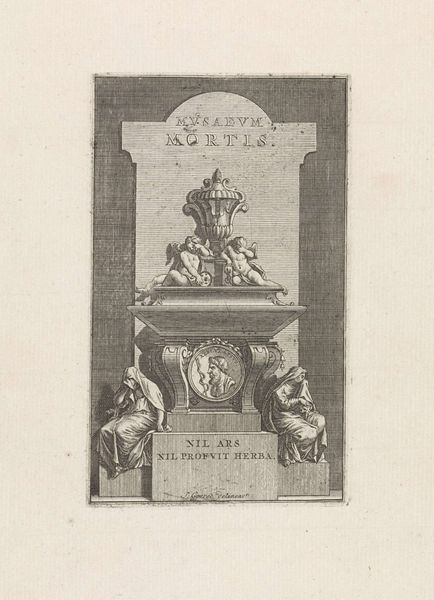
Dimensions: height 194 mm, width 135 mm
Copyright: Rijks Museum: Open Domain
This etching of a coffin-shaped epitaph was made by Jean Le Pautre in France in the 17th century. Epitaphs were a common way to commemorate the dead, especially among the elite. Le Pautre's design reflects the Baroque style, popular at the time, which emphasized grandeur and elaborate ornamentation. The image is rich with visual codes. The weeping figures on either side of the urn atop the epitaph, the skull at the bottom, and the cross at the very top are all familiar symbols of mortality and Christian faith. France in the 1600s was a society deeply shaped by religious belief, and the Catholic Church was a major institutional force. As historians, we can delve deeper into the social context by examining funeral practices, religious beliefs, and artistic conventions of the period. Researching similar epitaphs and the patrons who commissioned them will teach us more about the social and political meanings they conveyed. By understanding the institutions and social structures of the time, we can begin to understand how art played a role in shaping cultural values and beliefs.
Comments
No comments
Be the first to comment and join the conversation on the ultimate creative platform.
